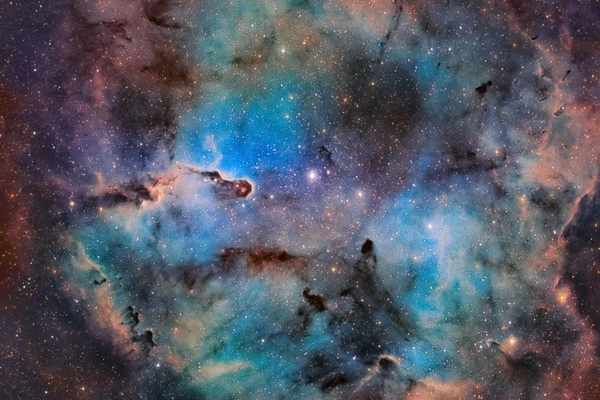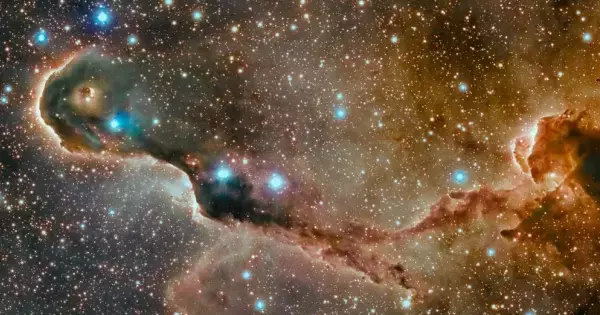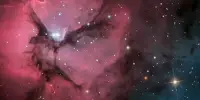The Elephant’s Trunk Nebula is a star-forming region located in the constellation Cepheus, about 2,400 light-years away from Earth. It is a dense, elongated cloud of gas and dust that is being illuminated and eroded by the radiation and winds from nearby hot, massive stars.
The nebula is named after its resemblance to an elephant’s trunk, which is visible in images taken in visible light. However, the most striking features of the Elephant’s Trunk Nebula can only be seen in infrared and radio wavelengths, where the thick clouds of dust are more transparent.
The Elephant’s Trunk Nebula is a concentration of interstellar gas and dust within the much larger ionized gas region IC 1396, which is located about 2,400 light years away from Earth in the constellation Cepheus. The dark, dense globule IC 1396A is shown here; it is known as the Elephant’s Trunk nebula because of its appearance at visible light wavelengths, where there is a dark patch with a bright, sinuous rim.
The Elephant’s Trunk Nebula is home to many young, newly-formed stars that are still surrounded by their birth cocoons of gas and dust. These stars are hot and energetic, and their strong ultraviolet radiation ionizes the gas in the nebula, causing it to glow. Over time, the radiation and winds from these stars will blow away the surrounding gas and dust, revealing the new stars and their planetary systems.

The bright rim represents the surface of the dense cloud, which is being illuminated and ionized by a very bright, massive star (HD 206267) just to the east of IC 1396A. Except for dense globules that can shield themselves from the star’s harsh ultraviolet rays, the entire IC 1396 region is ionized by the massive star.
The Elephant’s Trunk Nebula, which contains several very young (less than 100,000 years old) stars discovered in infrared images in 2003, is now thought to be a site of star formation. Two older stars can be found in a small, circular cavity in the globule’s head. The cavity may have been emptied by winds from these young stars.
The Elephant’s Trunk Nebula is a popular target for amateur and professional astronomers, as its intricate structure and beautiful colors make it a stunning sight in telescopes. The combined action of the massive star’s light ionizing and compressing the cloud’s rim and the wind from the young stars shifting gas from the center out leads to extremely high compression in the Elephant’s Trunk Nebula. This pressure is responsible for the current generation of protostars.
















